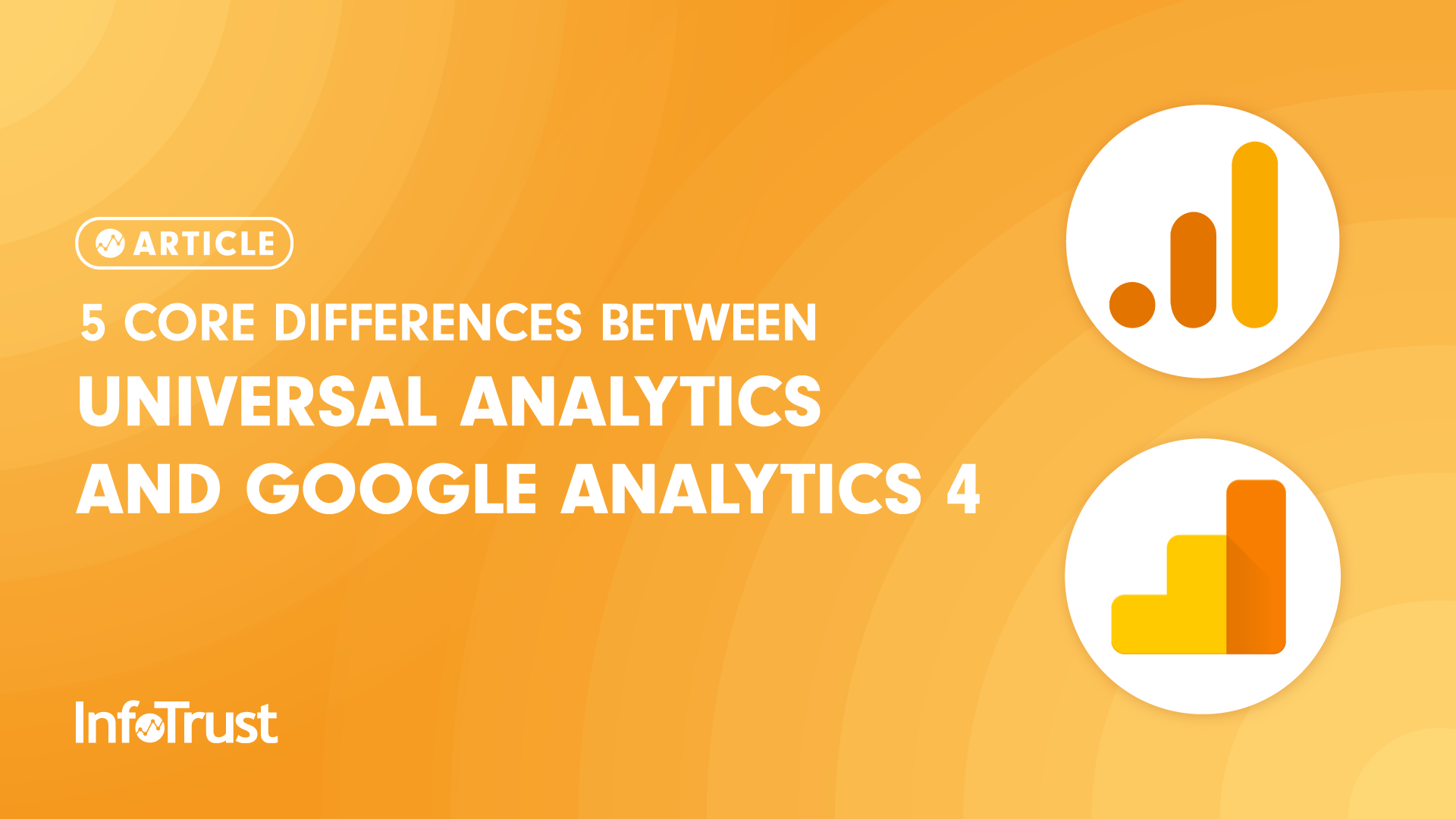In March, Google announced that it will sunset Universal Analytics (UA) in 2023. This change means you need to start the transition to Google Analytics 4 (GA4). Are you still fuzzy on what the main differences are between UA and GA4? This list will help you prepare for the transition.
1. Google Analytics 4 Properties
The first thing to understand about GA4 is that it is essentially a redesign of Google Analytics. It seeks to eliminate siloed data from your web and app analytics and unify it in one data collection and reporting interface. This way, you can collect data from your website, Android and iOS apps under one property to track and analyze the customer journey across devices.
2. Data Streams
Data streams are a way of collecting different sources of data under one property. You can add multiple web and app streams to each property—think of each data stream as an unfiltered/raw data view. Views themselves will no longer be available in GA4. Filters will be applied at the property or subproperty level (subproperties are a GA4 360-only feature), and have features for testing before making active and for inactivating active filters.
3. All Hit Types Become Events
GA4 was created to give a unified view of the customer journey across web and app. To do this, the UA approach of several different kinds of hits + custom dimensions and metrics was changed to reflect the app approach of events + parameters that will be familiar to Firebase users. Pageviews from UA can still be passed as an event in GA4. Instead of custom metrics and dimensions, parameters are used to customize events. This alignment with the way things are done on apps will help to create a comprehensive view of the customer journey as they switch between device and web.
4. Fewer Standard Reports, Easier Ad Hoc Analysis
There will be fewer standard reports, and it will be easier to create custom ad hoc reports using Explorations in GA4. The explorations UI is similar to Data Studio, and you can easily create custom reports that suit particular users/roles. In addition, you can use templates to help you get started. Templates are grouped by techniques, use cases, and industry and include everything from free form to funnel and path exploration, acquisition and conversion, and ecommerce report templates. While a version of some of these reports was included in standard UA reports, the templates in GA4 provide a starting point that you can customize according to your needs.
5. Goals Become Conversions
In UA, conversions are measured as either ecommerce transactions or goals. GA4 simplifies this by labeling any events you identify as contributing to your business objectives as conversions.
The takeaway: GA4 creates a unified view of the user journey and adds greater reporting flexibility.
Additional resources to help you on GA4:
Current Version of Google Analytics (Universal Analytics) to Sunset in 2023 | What You Need to Know
Google Analytics 4 Update: February 2022 – InfoTrust’s Strategic Approach & Recommendations
Back to the Basics: Google Analytics 4
Ready to start your transition to GA4? Click the Talk to Us button to learn more about how InfoTrust can help you.



